
The Human Cost of the Israeli-Palestine Conflict
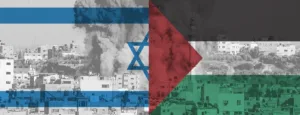
Background Information on the Conflict
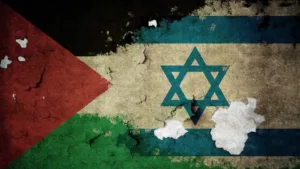
The Israeli-Palestinian conflict is a long-standing and complex conflict between Israelis and Palestinians over competing claims to the same land.
The origins of the war may be traced to the latter part of the 19th to the beginning of the 20th decades when surges of Jewish immigrants started to arrive in Palestinian Territory, which was then a territory under the control of the Ottoman Empire. Jews and Arabs in the Palestinian territories saw violent conflicts as tensions between the two communities rose.
Following World War One, Britain took over the sovereignty of Palestine, and Jewish immigration persisted. The Arab governments rejected the United Nations’ plan to divide Palestinian territory into distinct Jewish and Arab states, and conflict erupted. When Israel proclaimed its independence in 1948, Arab nations attacked and up to 700,000 Palestinians were driven from their homes. Since the 1967 Six-Day War, Israel has been in control of the West Bank and Gaza Strip, prolonging the ongoing war.
Jews and Palestinians both consider the region to be their historic homeland, giving rise to conflict over opposing claims to the same territory. Numerous elements, including geographical, historical, and religious issues as well as diplomatic reasons, have compounded the battle.
With thousands of fatalities, millions of refugees, and pervasive psychological anguish, the conflict has had a severe human cost. Notwithstanding generations of worldwide efforts to end the war, a sustainable peace solution has proved elusive. (The New York Times, 2021)
Purpose of the Report
The purpose of the report “The Human Cost of the Israeli-Palestine Conflict” is to provide an overview of the significant human cost of the conflict between Israelis and Palestinians. The purpose of the study is to provide readers with a thorough grasp of the number of injuries and deaths, the number of displaced people and refugees, and additionally, the psychological impacts that the conflict has caused on both Israelis and Palestinians. The paper also tries to explain the historical background of the war, the current circumstance, and the response of the international community.
The study aims to increase public awareness of the continuous suffering brought on by the dispute and to highlight the necessity of a peaceful conclusion. The study hopes to promote negotiations and communication among Israelis and Palestinians as well as the continuous involvement of the international community in finding a peaceful solution to the issue by highlighting the human cost of the war. In the end, the report is a call to action for all parties to cooperate in finding a peaceful solution that resolves the fundamental problems and offers a way for both Israelis and Palestinians.
Overview of the Human Cost of the Conflict

Both Israelis and Palestinians have suffered a great deal as a result of the Israeli-Palestinian conflict. Numerous people have died in the fight, there have been many displacements and refugees, and both communities have suffered psychologically.
• Casualties and Fatalities: Thousands of individuals have died as a result of the violence on both sides. According to the Israeli Ministry of Foreign Affairs, 4,364 Israelis—including 3,371 the civilian population and 993 security personnel—have died in the conflict as of 2021. The United Nations calculates that since 2000, more than 9,000 Palestinians have died, including about 2,000 children.
• Displacement and Refugees: On both sides of the violence, thousands of people have been displaced. According to the United Nations, there are presently about 5.7 million Palestinian refugees, including individuals who were displaced as a result of the 1948 and 1967 conflicts and their ancestors. Approximately 450,000 Israelis reside in settlements on the West Bank, which are prohibited under international law. Due to the frequent land seizure and eviction of Palestinian people, such settlements have been a major source of strife.
• Psychological Toll: Both Israelis and Palestinians have suffered severe psychological effects as a result of the conflict. A substantial amount of anxiety, stress, and trauma have been brought on by the continued violence and instability. A significant prevalence of depressive disorders and symptoms of post-traumatic stress disorder (PTSD) are reported by Israelis and Palestinians alike, particularly among individuals who have personally experienced violence or lost close ones. Children are especially susceptible to the psychological consequences of war because they frequently see violence and have their schooling and everyday lives disrupted.
There have been thousands of fatalities, millions of refugees, and severe psychological suffering as a result of the Israeli-Palestinian conflict. It is crucial to acknowledge the human cost of the conflict while striving for a peaceful conclusion that offers both Israelis and Palestinians a way ahead.
I. Historical Context

A brief history of the Conflict
Long-running and intricate disputes involving Israelis and Palestinians over conflicting claims to the same territory have led to the Israeli-Palestinian conflict. When surges of Jewish immigrants began to arrive in Palestine, which was then a part of the Ottoman Empire, in the latter half of the 19th and early 20th centuries, that is when the war first started to take shape. Jews and Arabs in Palestine saw violent conflicts as tensions between the two groups rose over time. (Al Jazeera, 2021)
Following World War One, Britain took over the sovereignty of Palestine, and Jewish immigration was asserted. The Arab governments rejected the United Nations’ plan to divide Palestine into separate Jewish and Arab states, and conflict erupted. When Israel proclaimed its independence in 1948, Arab nations attacked and up to 700,000 Palestinians were driven from their homes. In Palestinian history, this incident is known as the Nakba or calamity.
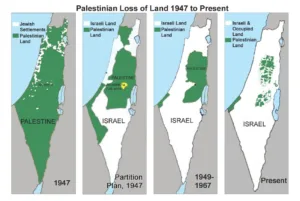
Israel has held the West Bank and Gaza Strip under occupation since the 1967 Six-Day War, prolonging the war. The First Intifada, or Palestinian revolt, started in 1987, which increased Israeli-Palestinian violence. The Oslo Accords, which were signed in 1993 and sought to create a framework for the conflict’s resolution, eventually failed to result in a sustainable peace deal. (Amnesty International,
2021)

The Second Intifada, which started in 2000, was characterized by an uptick in violence and attacks on themselves by Palestinian factions. Israel removed its troops and settlers from the Gaza Strip in 2005, but it kept control over the area’s borders, airspace, and seas. A permanent peace accord has proved elusive despite repeated outbreaks of violence and attempts at peace discussions during the ongoing war.
Jews and Palestinians both consider the region to be their historic homeland, giving rise to conflict over opposing claims to the same territory. Numerous elements, including geographical, historical, and religious issues along with geopolitical reasons, have compounded the battle. With thousands of dead, hundreds of thousands of refugees, and extensive psychological suffering, the conflict has had a severe human cost.
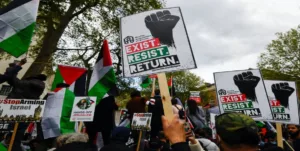
The Israeli-Palestinian conflict has a lengthy and complicated history of events that led to the current state of affairs. Several significant occurrences that contributed to the current predicament include:
- The Balfour Declaration (1917): The construction of a “home of national significance for the Jewish people” in Palestine was backed by the British government, according to this statement made by the United Kingdom’s foreign secretary, Arthur Balfour. In the course of Zionism, the struggle for Jewish autonomy in Palestine, this proclamation is seen as a pivotal turning point.
- The Partition Plan (1947): The United Nations put up a plan to divide Palestine into autonomous Jewish and Arab governments after World War II. The 1948 Arab-Israeli War resulted in Arab authorities rejecting the proposal while Jewish leaders approved it.
- The Nakba (1948): Thousands of Palestinians were compelled to flee or abandon their homes when the state of Israel was founded in 1948, and this resulted in the eviction of tens of thousands of people. The Nakba, or vintage “catastrophe,” is what Palestinians refer to this event as.
- The Six-Day War (1967): Israel invaded Syria, Egypt, and Jordan in 1967, winning the conflict and taking control of the Sinai Peninsula, the Golan Heights, the West Bank, and the Gaza Strip. Because it resulted in Israel’s occupation of Palestinian territory, this incident is seen as an event of significance in the conflict.
- The Oslo Accords (1993): To create a framework for the conflict’s settlement, Israel and the PLO, or Palestine Liberation Organization, signed the Oslo Accords in 1993. In certain areas of the West Bank and Gaza Strip, the agreements created the Palestinian Authority as a sovereign entity.
- The Second Intifada (2000): The second phase of the Intifada, or Palestinian revolt, began in 2000 after violence between Israelis and Palestinians. Israeli military actions in the territories of the West Bank and Gaza Strip, as well as an uptick in bloodshed and suicide attacks by Palestinian organizations, all occurred during this time.
- The Gaza War (2008-2009): Israel began a military campaign in the Gaza Strip in 2008 in response to the rocket assaults from Hamas, the Islamist organization in charge of the region. Numerous Israelis as well as hundreds of Palestinians perished in the fighting, and Gaza suffered extensive damage.

These significant occurrences have led to the current Israeli-Palestinian conflict, which is marked by persistent bloodshed, political gridlock, and a lack of movement toward a durable peace solution, among many other factors. (BBC News, 2021)
Overview of the current situation
The Israeli-Palestinian conflict is now characterized by escalating bloodshed, a deadlock in politics, and little movement toward a durable peace deal. (Brookings Institution, 2021)
• Violence: Israeli-Palestinian violence is still a significant problem in the conflict. Aggression in the West Bank has increased since 2019, including assaults on Palestinians by Israeli settlers and altercations between Palestinians and Israeli security officers. Additionally, there have been sporadic outbreaks of armed conflict in the region of Gaza, including Israeli military operations and rocket assaults by Palestinian terrorists.

• Political Stalemate: Political impasse has existed in the battle for a long time, and both parties are firmly rooted in their beliefs. While Palestinian officials have demanded an end to
Israeli occupation and the creation of a Palestinian state, Israeli Prime Minister Benjamin
Netanyahu has continued a strategy of settlement growth in the West Bank. Israelis and Palestinians alike are feeling frustrated and despairing as a result of the failed discussions and the lack of progress towards a durable peace accord.
• International Involvement: An everlasting peace accord has eluded attempts by the international community to end the war for decades. Historically, the United States has been a key player in these initiatives, but the Trump administration has made a number of decisions that have been perceived as favouring Israel, such as relocating the diplomatic mission to Jerusalem and recognising Israeli sovereignty over the area known as the Golan Heights. Although the administration of Joe Biden has expressed an additional dedication to seeking a two-state solution, it is unclear if these efforts will be effective.
• COVID-19 Pandemic: Both Israelis and Palestinians are dealing with health and economic issues as a result of the COVID-19 epidemic, which has had a substantial influence on the war. The epidemic has also brought attention to the necessity of Israelis and Palestinians working together and in concert, notably in the fields of public health and economic growth.

Overall, the Israeli-Palestinian conflict is characterized by continuing bloodshed, a deadlock in politics, and little movement toward a sustainable peace accord. With substantial humanitarian, economic, and security ramifications for both Israelis and Palestinians, the conflict continues to be a key cause of instability in the area.
II. Human Cost of the Conflict
Casualties and Fatalities
Both sides of the war have suffered a sizable number of losses and fatalities. As of 2021, 4,364 Israelis had died in the conflict, including 3,371 civilians and 993 security personnel, according to the Israeli Ministry of Foreign Affairs. The United Nations calculates that since 2000, more than 9,000 Palestinians have died, including about 2,000 children. (Council on Foreign Relations, 2021)

Palestinian casualties and fatalities
There have been a sizable number of Palestinian deaths and casualties as a result of the Israeli-Palestinian conflict. Over 9,000 Palestinians have been killed since 2000, including about 2,000 children, according to the UN.

Most of these fatalities have happened during Israeli military operations in the West Bank and Gaza Strip, as well as times of unrest and violence. Palestinian deaths from Israeli military operations in the Gaza Strip have been particularly high; the UN estimates that more than 2,200 Palestinians died during the Gaza War alone in 2014.
Hundreds of thousands of Palestinians have lost their lives as a result of the conflict, many of them gravely. This covers harm received during Israeli military operations, as well as harm received during demonstrations and run-ins with Israeli law enforcement.
Human rights groups have expressed grave concern about the large number of Palestinian wounded and fatalities and have condemned Israel for employing excessive force and aiming its attacks at civilians. The Israeli government has refuted these claims, claiming that it has a right to protect itself against Palestinian attacks.
In order to stop additional loss of life and misery on both sides, a peaceful end to the conflict is urgently required given the significant number of Palestinian wounded and fatalities. Additionally, it emphasizes the significance of respecting all civilians’ rights and dignity, irrespective of their nationality or ethnicity, and the necessity for all parties to the conflict to adhere to international law and human rights standards.
Israeli casualties and fatalities
There have been a sizable number of Israeli injuries and fatalities as a result of the Israeli-Palestinian conflict. 4,364 Israelis have died in the war since 1948, which might involve 3,371 civilians and 993 security personnel, according to the Israeli Ministry of Foreign Affairs.
The Second Intifada, the 1967 Six-Day War, and the 1948 Arab-Israeli War all saw a disproportionate number of Israeli dead. Thousands of Israelis, including civilians and security personnel, have also been hurt in the fighting in addition to these fatalities.
Palestinian militants have attacked Israeli citizens, especially when there is conflict and instability. This covers terrorist acts including suicide bombs, rocket strikes, and others. Palestinian terrorists have also attacked Israeli security forces, especially during military strikes in the West Bank and Gaza Strip.
Both the Israeli government and the Israeli population have expressed serious worry about a large number of Israeli wounded and fatalities. It has exacerbated Israelis’ sense of pain and fear and served as a significant roadblock to peace talks.
The significant number of injuries and deaths on both sides emphasizes the pressing necessity for a peaceful end to the hostilities in order to stop future suffering and loss of life. The necessity of all sides to protect the liberties and worth of all civilians, regardless of their country or ethnicity, is emphasized, along with the significance of human rights and international law in the context of the war.
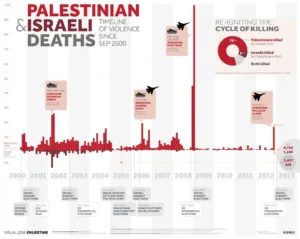
Displacement and Refugees
On both sides of the violence, thousands of people have been displaced. Palestinian refugees, including those uprooted during the 1948 and 1967 conflicts and their descendants, are estimated by the UN to number approximately 5.7 million at the moment. Approximately 450,000 Israelis reside in settlements on the West Bank, which are prohibited under international law. (United Nations, 2021)
Palestinian displacement and refugees
Numerous Palestinians who were displaced as a result of the Israeli-Palestinian conflict are now refugees. Since the 1948 Arab-Israeli War, which resulted in the exodus of hundreds of thousands of Palestinians who either fled or were compelled to abandon their homes, the relocation of Palestinians has been a persistent problem.
The number of Palestinian refugees at this time, including those who were uprooted amid the 1948 and 1967 wars and their descendants, is estimated by the UN to be about 5.7 million. These refugees are spread out over the West Bank, Gaza Strip, the countries of Jordan, Lebanon, and Syria, as well as in refugee camps.
With Palestinians seeking the right to be allowed to return to their homes and the Israeli government opposing these claims, the displacement of Palestinians has been a significant cause of tension and violence in the area. Peace talks have been significantly hampered by the Palestinian refugee problem, which continues to be one of the most divisive and challenging topics to settle.
The Israeli government has also been charged with displacing Palestinians through the development of settlements in the West Bank, in addition to the problem of Palestinian refugees. These settlements, which are prohibited by international law, have resulted in the annexation of Palestinian territory and the eviction of Palestinian occupants.
For negotiations to address the root causes and offer a road ahead that serves Israelis and Palestinians, a peaceful settlement of the conflict is urgently required. This is highlighted by the problem of Palestinian relocation and refugees.
It also emphasizes how crucial it is to uphold the fundamental freedoms and human rights of all civilians, which might involve refugees and internally displaced people, as well as how crucial it is to have international collaboration and support in order to deal with the humanitarian effects of the conflict.
Israeli displacement and refugees
Although on a much smaller scale, some Israelis have also been displaced as a result of the Israeli-Palestinian conflict, in addition to numerous Palestinians.
Approximately 700,000 Palestinians emigrated or were driven from their homes during the 1948 Arab-Israeli War, while 800,000 Jews were uprooted from Arab nations. Israel, which became a Jewish state in 1948, took in a large number of these Jewish refugees.
Since that time, Israel has mostly dealt with internal displacement and refugee concerns, notably in relation to Jewish settlers who have been forced and uprooted as a result of the demolition of settlements in the West Bank and the Gaza Strip.
Around 8,000 settlers were ejected from the Gaza Strip when Israel withdrew its troops and settlers in 2005. Israel has also demolished communities in the West Bank, which has resulted in the eviction of fewer settlers.
Israeli displacement and refugee issues, while less important than Palestinian displacement and refugee issues, serve as a reminder that both Israelis and Palestinians have experienced being impacted by the conflict and that a lasting solution must take both populations’ needs and concerns into account.
Overall, the relocation of Israelis and Palestinians serves as a stark reminder of the pressing need for a peaceful settlement of the conflict in order to address its root causes and offer a way ahead for everyone involved.
Psychological Toll
The instances of Israelis and Palestinians have suffered severe psychological effects as a result of the conflict. High levels of stress, anxiety, and trauma have been brought on by the continued violence and instability. A significant prevalence of depression and post-traumatic stress disorder (PTSD) are reported by Israelis and Palestinians alike, particularly among individuals who have personally experienced violence or lost close ones. (Human Rights Watch, 2021)
Impact on Palestinian Population
The dispute between Israel and Palestine has significantly impacted the Palestinian people, with far-reaching effects on their psychological and physical health, as well as their ability to thrive economically and socially and exercise their democratic and human rights.
• Physical and Emotional Well-being: Palestinians’ physical and mental health have suffered significantly as a result of the conflict, with widespread reports of substantial amounts of trauma, stress, and anxiety.
Palestinians have experienced bloodshed, displacement, and violations of human rights, all of which have added to their sense of unease and terror. With fewer resources and less access to healthcare, the conflict has also had a severe influence on the healthcare system in the seized regions.
• Economic and Social Development: With restricted access to resources, restricted liberty in movement, and high levels of poverty and unemployment, the conflict has had a substantial influence on the social and economic growth of the Palestinian territories.
The lack of essential services and facilities is a result of the Israeli military occupation’s considerable negative impact on Palestinians’ capacity to build their own government buildings and infrastructure.
• Political and Human Rights: With limits on their freedom of movement, expression, and assembly, the conflict has significantly impacted the political life and human rights of the Palestinian people. Israeli military law, which has drawn criticism for its lack of proper procedure and protections for human rights, is in effect for Palestinians in the occupied territories. The Palestinian population has also been significantly impacted by the controversial issues of settlements, the demarcation wall, and access to resources like water.
In general, the Israeli-Palestinian conflict has had a considerable negative impact on the Palestinian people, with long-lasting repercussions for their psychological and physical health, social and economic advancement, and political and human rights. With the goal of helping to address the fundamental problems and provide the Palestinian people with a route ahead, it emphasizes the urgent necessity for a peaceful conclusion to the conflict.
Impact on Israeli Population
The Israeli populace has also been greatly impacted by the Israeli-Palestinian conflict, with far-reaching effects on their psychological and physical health, social and economic advancement, and political and human rights.
• Physical and Emotional Well-being: Israelis’ physical and mental health has suffered as a result of the conflict, especially those who live near the West Bank and the Gaza Strip. Due to rocket strikes, bombings by suicide, and other acts of violence, Israelis have experienced a sense of unease and terror. Israelis’ mental health has also been significantly impacted by the conflict, particularly children and young people who have grown up in a violent and unstable environment.
• Economic and Social Development: Israelis’ physical and mental health has suffered as a result of the conflict, especially those who live near the West Bank and the Gaza Strip. Due to rocket strikes, bombings by suicide, and other acts of violence, Israelis have experienced a sense of unease and terror. Israelis’ mental health has also been significantly impacted by the conflict, particularly children and young people who have grown up in a violent and unstable environment.
• Political and Human Rights: Israelis’ political and human rights have been significantly impacted by the conflict, notably with regard to their freedom of assembly, speech, and movement. Israeli society has become more polarized politically as a result of the war, particularly when it comes to the settlement question and Israel’s control of the West Bank and Gaza Strip.
In general, the Israeli-Palestinian conflict has had a considerable negative influence on the Israeli populace, with long-lasting repercussions for their psychological and physical health, social and economic advancement, and political and human rights. In order to address the underlying concerns and offer a route ahead that serves Israelis and Palestinians, it emphasizes the urgent need for a peaceful end to the conflict.
III. International Response
Overview of the International Community’s Response
The dispute between Israel and Palestine has long been a source of worry for the worldwide community, which has spent decades trying to find a solution. In reaction to the crisis, the world’s community has undertaken a number of initiatives, including diplomatic attempts, economic penalties, and humanitarian help.
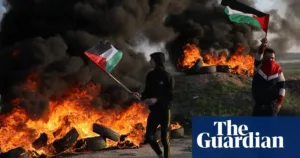
• Diplomatic Efforts: The global community has undertaken several diplomatic endeavours, including peace talks, peace strategies, and diplomatic initiatives, to try and end the conflict. Although other nations and international bodies like the United Nations, the European Union, and the Arab League have also participated, the United States has usually taken the lead in these efforts.
• Economic Sanctions: Economic sanctions have been used by the international community to put pressure on both Israelis and Palestinians to make concessions and engage in peace talks. Campaigns for boycotting, divesting from, and sanctioning (BDS) Israel as well as limitations on aid and commerce to the Palestinian territories have been included in these measures.
Humanitarian help: Significant humanitarian help has also been given to Palestinians in the occupied territories by the international community, notably in the fields of health, education, and social services. Numerous international organizations and individual nations, including the United States and the European Union, have contributed to this help. (European Union External Action, 2021)
Despite these initiatives, the crisis has not yet ended, and the global community is still debating the best ways to deal with the continued bloodshed and political impasse.
A peaceful conclusion to the crisis and the protection and respect of the fundamental human rights of all civilians, despite their country or ethnicity, are crucial roles for the international community to play. (U.S. Department of State, 2021)
The Israeli-Palestinian conflict involves many important parties, including states, non-state groups, and international organizations. There may occasionally be a clash between the viewpoints and interests of each of these players.

• Israeli Government: Prime Minister Naftali Bennett and the Israeli government have historically adopted a tough stance on the issue, highlighting Israel’s right to self-defence and the expansion of settlements in the West Bank. The administration has also criticized Palestinian officials for not accepting Israel’s status as a Jewish state.
• Palestinian Authority: A Palestinian state should be created and the Israeli occupation should cease, according to the Palestinian Authority, which is headed by President Mahmoud Abbas.
The Palestine Authority has also criticized the growth of Israeli settlements in the West Bank and pushed for the establishment of a Palestinian state on a global scale.
• United States: Although the Trump administration adopted a stronger pro-Israeli posture, recognising Jerusalem as the capital of Israel and reducing financing to the Palestinian Authority, the United States has historically taken a major role in efforts to resolve the dispute.
The administration of Joe Biden has reaffirmed its support for the idea of two states and demanded a stop to the growth of settlements.
• United Nations: Since the beginning of the conflict, the United Nations has been actively involved in efforts to find a solution and has been crucial in supporting peace talks and delivering humanitarian supplies. The UN has also called for an end to the occupation and criticized Israeli settlements in the West Bank.
• European Union: The European Union has contributed significantly to aiding the Palestinian territory and has participated in efforts to end the war. The EU has also called for an end to the occupation and criticized Israeli settlements in the West Bank.
• Non-state actors: Countless non-state players are also engaged in the war, including Palestinian terrorist organizations like Hamas and Islamic Jihad, which have attacked Israel with rockets. Israeli right-wing organizations and settlers that support settlement growth and a tough stance against Palestinian aspirations have also contributed to the violence.
In general, the primary participants in the Israeli-Palestinian conflict have complicated perspectives and interests that frequently clash. It will be difficult for the international community to bring these stakeholders together and chart a course for a peaceful end to the conflict.
Efforts to Bring About Resolution and Peace
There have been decades-long efforts to end the Israeli-Palestinian conflict and establish peace. In order to address the underlying problems and offer a way ahead that applies to Israelis and Palestinians, these efforts have included a variety of political, economic, and humanitarian measures.
• Diplomatic Efforts: To bring Israeli and Palestinian officials together to reach a peace accord, diplomatic attempts have included peace dialogues, peace blueprints, and diplomatic initiatives. A variety of entities, consisting of the United States, the United Nations, the European Union, and particular nations like Egypt and Jordan, have taken the lead in these efforts.
• Economic Initiatives: Economic activities have included development and humanitarian projects aiming at enhancing the economic climate in the Palestinian territories and fostering business partnerships between Israelis and Palestinians. The international community, which includes the US, the EU, and individual nations like Japan and Norway, has backed these endeavours.
• Humanitarian Initiatives: Giving humanitarian help to Palestinians in the territories that are under occupation has been a part of the humanitarian effort. This aid has been especially focused on the provision of social, health, and educational services. Numerous international organizations as well as individual nations like the United States and the European Union have backed these projects.
• Civil Society Initiatives: Initiatives by civil society have included work to encourage interaction and comprehension between Israelis and Palestinians as well as peace and reconciliation. Numerous players, including non-governmental organizations, religious organizations, and grassroots activists, have participated in these activities.
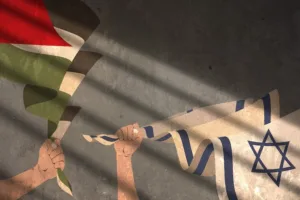
Despite these efforts, the war has not yet been put to an end, and the world’s community is still debating the best way to achieve a peaceful conclusion. The road to peace is complicated and difficult, but it calls for a persistent dedication on the part of all parties to communication, collaboration, and compromise. It also necessitates a commitment to upholding international law and human rights, as well as the acknowledgement of the rights and dignity of all civilians, irrespective of their nationality or race.
Summary of the key findings
The Israelis and Palestinians have been significantly impacted by the protracted and complicated Israeli-Palestinian conflict. Both sides of the fight have suffered a significant number of losses and fatalities, and there are still divisive and challenging refugee and displacement concerns.
Through political, economic, and humanitarian measures, the international community has been working to end the conflict for many years. However, the dispute has not yet been ended due to the continuing bloodshed and political impasse, which make it extremely difficult to move toward peace.
Israeli governance, the Palestinian Authority, the United States, the United Nations, and the European Union are some of the major parties involved in the dispute.
Each of them has a perspective and an interest that might occasionally clash. All sides must remain committed to negotiation, collaboration, and compromise in order to achieve a peaceful conclusion. They must also acknowledge the rights and dignity of all people, regardless of their nationality or race.
In order to address the underlying problems and provide a road forward for both Israelis and Palestinians, the Israeli-Palestinian conflict continues to pose a huge challenge, and the international community must continue to strive towards finding a path forward towards a peaceful conclusion.
Implications for the future
Future developments are significantly impacted by the Israeli-Palestinian conflict, both for those who are immediately impacted by it and for the larger area and global world.
If the war isn’t concluded, there will probably still be a lot of injuries and deaths, as well as continued problems with displacement and refugees. This will exacerbate the sense of unease and instability already present in the area and make it more challenging to address other urgent problems like poverty, economic growth, and human rights.
Additionally, the continuous war has exacerbated political polarization and differences in Israeli and Palestinian society, which may have long-term effects on the two nations’ social and political growth. Additionally, it could help some groups become more radicalized, especially young Palestinians who have grown up in a violent and violent environment.
On the other side, a just and peaceful conclusion to the dispute may have profoundly positive effects on the area and the larger international community. It might serve to improve peace and security in the region and could allow for more economic cooperation and growth. It may also serve as a guide for settling other disputes and advancing justice and peace globally.
The road to a peaceful conclusion is complicated and difficult, but it demands a consistent dedication on the part of all parties concerned to communication, collaboration, and compromise, as well as an understanding of the rights and dignity of every individual, irrespective of their nationality or race. In order to guarantee that a just and long-lasting peace can be reached, the international community must continue to play a crucial role in attempts to settle the conflict and must offer the assistance and resources that are required.
Call to Action
• The international community must take immediate action to resolve the complicated and ongoing Israeli-Palestinian conflict. Individuals may assist efforts for a peaceful resolution in a number of ways:
• Educate ourselves: We should spend time learning about the complexity and history of the dispute, as well as the many viewpoints and stances of the main actors.
• Advocate for peace: Supporting groups and activities that encourage communication, collaboration, and understanding between Israelis and Palestinians is one way we can work for peace. Additionally, we may spread awareness of the conflict’s effects and the critical need for a peaceful conclusion.
• Support humanitarian aid: We may support humanitarian relief initiatives that offer vital supplies and assistance to Israelis affected by the war as well as to Palestinians living in the occupied territories.
• Call for political action: We may ask our elected officials to take action to support diplomatic efforts, financial assistance, and political pressure on both parties to make compromises and engage in good faith in order to move toward a peaceful conclusion.
• Engage in dialogue: We can hold discussions with people on either side of the issue in an effort to foster empathy and understanding amongst various populations.
We must all maintain a consistent commitment to advancing peace, justice, and respect for human rights in order to resolve the crucial Israeli-Palestinian problem. We must keep seeking a way forward for a fair and long-lasting end to the conflict as people and as members of the international community.







